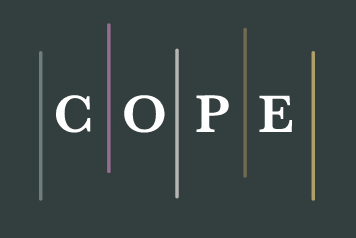KEMUDI’s Pursuance of Muslim Identity and its Implications to Malaysian Muslims
DOI:
https://doi.org/10.58355/maqolat.v2i3.96Keywords:
Muslim Identity, Malay Muslim Organization, Ethno-Religious Identity, Malay Sultanate, Sunni ahl al-baytAbstract
KEMUDI or Persatuan Kesedaran Melayu dan Islam (The Malay and Islamic Awareness Association) is a Malaysian based non-governmental organization (NGO) established in 2013. The organization aims to embrace and uphold a discreet Malay-Arab Muslim identity believed as being degraded by colonialism that introduces liberal democracy and capitalism to replace Malay monarchy. This qualitative study involves data collection from social media platforms, library research and semi-structured interviews. The descriptive analytical approach is applied within the organizational framework of Objective, Leadership Structure, Membership, Resource, Strategy and Tactic. The aim is to investigate KEMUDI’s origin, strategy and tactic as well as its variant of Muslim identity. It follows that KEMUDI’s pursuit of Muslim identity incorporates upholding a hybrid Arab ancestry (read: prophetic, ahl al-baytness) as the prerogative of Malay Muslim identity using strategical alliances and tactical series of lectures, publications as well as cultural activities. The Malay Arab Muslim identity is being pursued and maintained, symbiotically, as religiously significant and ethnically privileged to serve political, religious and social pursuits. The implication of KEMUDI’s ethno-religious identity to Malaysian Muslims focuses on three sectors of the National Integrity Plan (NIP); politics, civil society organization (CSO) and religion. It is found that the discreet dual Malay Arab Muslim identity adopted by KEMUDI has its share of commendatory and condemnatory implications on Malaysian Muslims.
Downloads
References
(KEMUDI), Pertubuhan Kesedaran Melayu & Islam. “Merancang Kebangkitan Ummah.” Facebook, 2015. https://www.facebook.com/373882256093011/posts/merancang-kebangkitan-ummahpersoalan-persoalan-akhir-zaman-alamat-alamat-dan-tan/549625701851998/.
Ahmad Fauzi, Abdul Hamid. “Shariaization of Malay-Muslim Identity in Contemporary Malaysia.” Journal of the Malaysian Branch of the Royal Asiatic Society 91, no. 2 (2018): 49–78. https://doi.org/10.1353/RAS.2018.0017.
Al-Husaini, A.H.H. Mengenal Ahli Bait Rasulullah SAW. Singapura: Pustaka Nasional, 1998.
Freitag, Ulrike. “Reflections on the Longevity of the Hadhrami Diaspora in the Indian Ocean.” In The Hadhrami Diaspora in Southeast Asia: Identity Maintenance or Assimilation?, edited by Ahmed Ibrahim. Abushouk and Hassan Ahmad Ibrahim, 17–32. Leiden: Brill, 2009.
Government of Malaysia. National Integrity Plan. Kuala Lumpur: Integrity Institute of Malaysia, 2004.
Hoffstaedter, Gerahard Gerhard. “Modern Muslim Identities,” 2011, 272.
Howell, Julia Day. “Revival Ritual and the Mobilization of Late-Modern Islamic Selves.” Journal of Religious and Political Practice 1, no. 1 (January 29, 2015): 47–57. https://doi.org/10.1080/20566093.2015.1047691.
KEMUDI. “Profil KEMUDI (Persatuan Kesedaran Melayu Dan Islam),” 2013. http://www.pertubuhankemudi.com.
Lim, Kim Hui. “Budi as the Malay Mind: A Philosophical Study of Malay Ways of Reasoning and Emotion in Peribahasa.” University of Hamburg, 2003.
Mandal, Sumit K. Becoming Arab: Creole Histories and Modern Identity in the Malay World. Edited by Sunil Amrith, Tim Harper, and Engseng Ho. Cambridge: Cambridge University Press, 2018.
Mobini-Kesheh, N. The Hadrami Awakening: Community and Identity in the Netherlands East Indies 1900-1942. NY: SEAP, 1999.
Osman Bakar. Islamic Civilisation and the Modern World: Thematic Essays. Brunei Darussalam: UBD Press, 2014.
Probst, Gilbert, and Bettina Büchel. Organizatinal Learning. London: Prentice Hall, 1997.
Robbins, Stephen P., and N. Barnwell. Organization Theory. Sydney: Prentice Hall, 1998.
Stapa, Zakaria. “Malay-Muslim Identity in the Era of Globalization.” International Journal of Islamic Thought 10, no. 55–67 (2016): 2232–1314. https://doi.org/10.1016/0191-8869(94)90076-0.
Suzana Othman. “Ikhtiar Membangkitkan Umat Akhir Zaman!!” Pertubuhan Kesedaran Melayu & Islam (KEMUDI), 2014. https://www.facebook.com/kemudiresmi/posts/422189664595603.
———. “Seruan Kepada Pewaris Dinasti Melayu.” Khazanah Bendahara Seri Maharaja. Accessed January 9, 2021. http://www.khazanahbendaharaserimaharaja.com/seruan-kepada-pewaris-dinasti-melayu.html.
Suzana Othman, and Muzaffar Mohamad. Ahlul-Bait (Keluarga) Rasulullah SAW & Kesultanan Melayu. Batu Caves: Crescent News (KL), 2009.
Tan, Iskandar Hasan, and Mohd Ridhuan Tee. “Reassessment of Malaysia National Integrity Plan in Combating the Corruption.” Journal of Applied Environmental and Biological Sciences 6, no. 6S (2016): 17–23. www.textroad.com.
Wan Norhasniah Wan Husin. “Budi-Islam; It’s Role in the Construction of Malay Identity in Malaysia” 1, no. 12 (2011): 132–42.
Winstedt, R. O. “The Temenggongs of Muar.” Journal of the Malayan Branch of the Royal Asiatic Society 10, no. 1(113) (1932). https://www.sabrizain.org/malaya/library/jmbras
Downloads
Published
How to Cite
Issue
Section
License
Copyright (c) 2024 Sharifah Noorulhuda Binti Habib Elias

This work is licensed under a Creative Commons Attribution 4.0 International License.






















